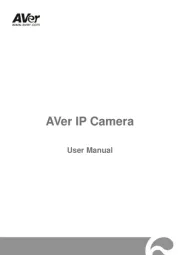Sanyo VCC-MC800P Bruksanvisning
Sanyo
övervakningskamera
VCC-MC800P
Läs gratis den bruksanvisning för Sanyo VCC-MC800P (59 sidor) i kategorin övervakningskamera. Guiden har ansetts hjälpsam av 16 personer och har ett genomsnittsbetyg på 4.8 stjärnor baserat på 8.5 recensioner. Har du en fråga om Sanyo VCC-MC800P eller vill du ställa frågor till andra användare av produkten? Ställ en fråga
Sida 1/59

INSTRUCTION MANUAL VCC-MC800P
VCC-MC700P
Color CCD Camera
About this manual
Before installing and using this unit, please read this manual carefully.
Be sure to keep it handy for later reference.
Produktspecifikationer
| Varumärke: | Sanyo |
| Kategori: | övervakningskamera |
| Modell: | VCC-MC800P |
Behöver du hjälp?
Om du behöver hjälp med Sanyo VCC-MC800P ställ en fråga nedan och andra användare kommer att svara dig
övervakningskamera Sanyo Manualer

29 Augusti 2024

21 Augusti 2024

20 Augusti 2024

18 Augusti 2024

11 Augusti 2024
övervakningskamera Manualer
- Qoltec
- Nedis
- Provision ISR
- Videotec
- Conbrov
- SecurityMan
- Rollei
- Gewiss
- Olympia
- Ubiquiti Networks
- Atlona
- Vimtag
- Nivian
- Qian
- Crestron
Nyaste övervakningskamera Manualer

23 Oktober 2025

20 Oktober 2025

20 Oktober 2025

19 Oktober 2025

19 Oktober 2025

19 Oktober 2025

19 Oktober 2025

18 Oktober 2025

14 Oktober 2025

14 Oktober 2025